Cataloging Library Resources
Library Support Staff Handbooks
The Library Support Staff Handbook series is designed for to meet the learning needs of both students in library support staff programs and library support staff working in libraries who want to increase their knowledge and skills.
The series was designed and is edited by Hali Keeler and Marie Shaw, both of whom teach in support staff programs and have managed libraries.
The content of each volume aligns to the competencies of the required and elective courses of the American Library AssociationAllied Professional Association (ALA-APA) Library Support Staff Certification (LSSC) program. These books are both textbooks for library instructional programs and current resources for working library staff. Each book is available in both print and e-book versions.
Published books in the series include:
- Foundations of Library Services: An Introduction for Support Staff
- Library Technology and Digital Resources: An Introduction for Support Staff
- Cataloging Library Resources: An Introduction for Support Staff
- Working with Library Collections: An Introduction for Support Staff
Cataloging Library Resources
An Introduction
Marie Keen Shaw
ROWMAN & LITTLEFIELD
Lanham Boulder New York London
Published by Rowman & Littlefield
A wholly owned subsidiary of The Rowman & Littlefield Publishing Group, Inc.
4501 Forbes Boulevard, Suite 200, Lanham, Maryland 20706
www.rowman.com
Unit A, Whitacre Mews, 26-34 Stannary Street, London SE11 4AB
Copyright 2017 by Rowman & Littlefield
All rights reserved . No part of this book may be reproduced in any form or by any electronic or mechanical means, including information storage and retrieval systems, without written permission from the publisher, except by a reviewer who may quote passages in a review.
British Library Cataloguing in Publication Information Available
Library of Congress Cataloging-in-Publication Data Available
ISBN 978-1-4422-7485-3 (cloth : alk. paper)
ISBN 978-1-4422-7486-0 (pbk : alk. paper)
ISBN 978-1-4422-7487-7 (electronic)
 The paper used in this publication meets the minimum requirements of American National Standard for Information SciencesPermanence of Paper for Printed Library Materials, ANSI/NISO Z39.48-1992.
The paper used in this publication meets the minimum requirements of American National Standard for Information SciencesPermanence of Paper for Printed Library Materials, ANSI/NISO Z39.48-1992.
Printed in the United States of America
To my parents, Mildred E. Keen and Harry J. Keen,
who taught their children how to make order
of their worldwith love and admiration
Preface
Aligned with the revised national American Library Association Library Support Staff Certification (ALA-LSSC) competency standards for cataloging and classification, Cataloging Library Resources: An Introduction provides clear explanations, suggestions, and examples on how to successfully create catalog records using current RDA rules and practices. This book is essential for those who need to know how to interpret revised cataloging rules and standards in order to apply them in practice to all types of library materials. Embedded throughout the book are textboxes that simplify cataloging processes. At the end of each chapter is an extensive list of online references and suggested readings for further exploration of the topics. This important handbook is geared to improve the readers knowledge and skills of cataloging. Each chapter is broken down into short subheadings to make complex topics easy to find, read, and understand. Tables and illustrations are abundantly used throughout the text to present key ideas simply and clearly.
The text is written for three intended audiences: working library staff, college instructors, and students in college library certificate or degree programs. No matter the type of library, there is even greater need today for skilled catalogers whose work conforms to the latest standards. Throughout the country accurate cataloging records from the smallest school to the largest academic and public libraries are being shared publicly in regional and statewide catalogs.
There is a shortage of practical texts written for library staff on the new standards of cataloging. Beginning or intermediate catalogers who work in technical services will want this book because it provides understandable explanations about todays cataloging standards. At the end of each chapter there are discussion questions and guided practice exercises aimed at creating bibliographic records that meet the current RDA rules and MARC21 specifications appropriate for classroom or individual use.
Instructors in library technology certificate or associate degree programs will want this book as a primary instructional resource. With extensive chapter bibliographies, this book supports curriculum on fundamentals of RDA cataloging, authority control, classification, copy cataloging, metadata, and future developments of BIBFRAME.
Students will find this a useful text for the way the information is presented in clear, non-technical language. An abundance of tables and figures make concepts easier to understand. Suggested websites and readings at the end of each chapter can further students knowledge of topics that are introduced in the book. Many references are from academic journals that are cited for further reading.
The scope of the book addresses many different aspects of the cataloging process staff should know about and the skills they should be able to perform to create full bibliographic MARC and item records that meet the highest requirements. Sequenced in three parts, the book contains the following:
Fundamentals of the Cataloging Process. The basics of cataloging, including how to use Library of Congress tools and other resources available to us
Classification of Library Materials. The application of call numbers and subject headings to any type of library material
Cataloging Library Materials. RDA cataloging rules as well as the future impact on cataloging with the development of BIBFRAME
Cataloging Practice. Practice cataloging activities for many types of library resources, included at the end of chapter 12
Part 1 begins with the introduction, where we learn the background purpose of cataloging, what a bibliographic record is, and how catalogers apply specific steps in the cataloging process. This section includes thorough explanations on the topics of online catalogs, collaborations, tools, and resources for the cataloger. RDA rules and BIBFRAME, topics that are later covered in depth in Part III, are also introduced here. Chapter 3 addresses the importance of name and title authority control to ensure uniformity to searching. In chapter 4 the reader gains practice with the revised MARC21 format that includes RDA descriptive and access fields. Chapter 5 provides options to the cataloger when they can copy catalog records or draw upon bibliographic records created from other sources. Part 1 concludes with a chapter on metadata and how it enhances searching.
Part 2 focuses on classification of library resources, which is the assignment of call numbers and subject headings. Call number assignments follow specific rules and guidelines depending upon the system the library selects. Most K12 and public libraries use the Dewey Decimal system, while larger public and academic libraries often use the Library of Congress classification system. For those who classify with the Dewey Decimal system, chapter 7 describes the logic of the tables and how to assign call numbers. Chapter 8 delves into the Library of Congress classification system with its classes, enumeration system, and expansions. How collections and individual materials are classified with Library of Congress subject authority control is the topic of chapter 9.
Next page
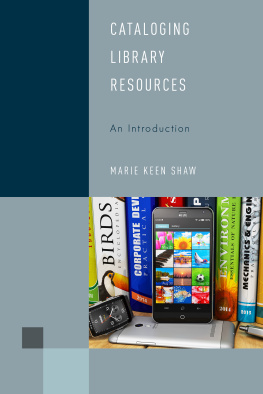
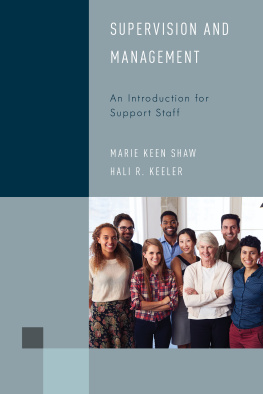

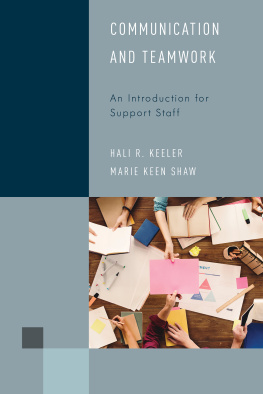
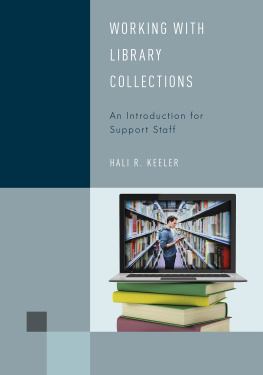
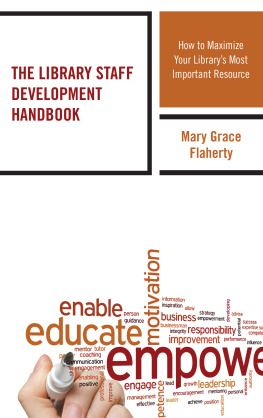
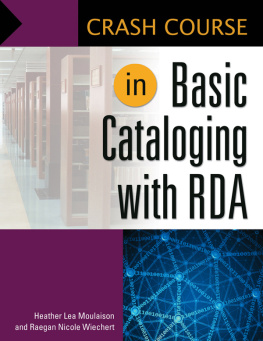
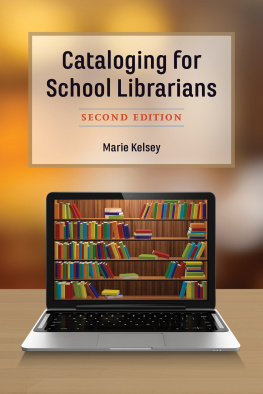
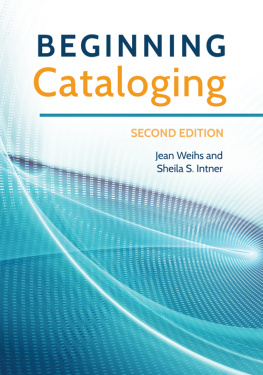
 The paper used in this publication meets the minimum requirements of American National Standard for Information SciencesPermanence of Paper for Printed Library Materials, ANSI/NISO Z39.48-1992.
The paper used in this publication meets the minimum requirements of American National Standard for Information SciencesPermanence of Paper for Printed Library Materials, ANSI/NISO Z39.48-1992.